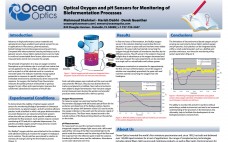Process modeling is a core technology in biopharmaceutical production that ensures faster, safer processing and process development. Developing a model involves quite some work, so it is important to use the model efficiently. We describe an industry example of how a mechanistic model is best used under process development and how it increases process understanding and performance. Present State of Process Development Biopharmaceutical process development relies heavily on experimentation and previous experience expressed as “rules of thumb” and empirical correlations.…
Analytical
Distinctions Between Analytical and Bioanalytical Test Methods
Analytical methods used for characterization, release, and stability testing of biotechnological/biological products are often automatically referred to as “bioanalytical” methods by some in the field. Many times the term is used to distinguish between test methods applied to small-molecule chemical products and those for macromolecular, biologically based products. It seems sensible enough: We use analytical methods to test chemical pharmaceutical products, so aren’t test methods used for biopharmaceutical products therefore bioanalytical methods? Any way, who cares whether the term is…
Understanding Virus Preparations Using Nanoscale Particle Characterization
As regulators become increasingly stringent in demanding a fuller understanding of whole virus preparations, researchers and manufacturers are looking beyond well-known characterization methodologies. Existing technologies for quantifying and characterizing viral preparations such as infectivity assays, quantitative polymerase chain reaction (qPCR), and protein assays provide crucial information but tell only half the story. We evaluated a unique technology developed by NanoSight Ltd. (www.nanosight.com) for visualizing viruses in liquid suspensions, measuring their approximate concentration, and characterizing their state of aggregation. Information generated…
Modeling Perfusion Processes in Biopharmaceutical Production
Perfusion processes are considered more difficult to model than batch-based fermentation processes because up to a third of a perfusion-based campaign is spent outside “steady-state” production mode. Variabilities in cell density, titer, and harvest rate (HR) during ramp-up necessitate planning and explicit modeling of variabilities in these processes and their subsequent downstream operations. Longer continuous fermentation times require more rigorous attention to risk than do batch-based systems. A flexible purification platform must respond to changing fermentation conditions. Here…
Ongoing Challenges of Applying QbD to Biopharmaceutical Products
Quality by design (QbD) was a hot topic at IBC’s BioProcess International Conference and Exhibition, 20–24 September 2010 (Providence, RI). For her keynote address, Helen Winkle (director of the FDA’s Office of Pharmaceutical Science) discussed the agency’s continuing efforts to improve product quality regulation as well as opportunities and challenges of implementing QbD for biotechnology products (1). Since introducing its 21st Century Initiative in 2002, the FDA has made some headway toward enhancing product quality through QbD (2). The QbD…
Scale-Up of a Plasmid DNA Purification Process
RecipharmCobra Biologics, Keele (previously Cobra Biomanufacturing Plc) has been producing plasmid DNA for clinical trials for more than 10 years and has an approved site under the EU clinical trials directive. During this period, the company has produced more than 40 plasmids (ranging from 500 mg to 5 g) for 25 customers in Europe and the United States. These plasmids have been used for gene therapy and vaccines as well as to produce viral vectors. RecipharmCobra has developed…
Linear Scale-Up of Cell Cultures
Reusable bioreactors have been the benchmark standard for many decades, during which a large knowledge base on process control and scale-up has been developed. However, single-use bioreactors are increasingly being implemented in modern bioindustrial upstream processes. Many of these bioreactors deviate from the traditional stirred-tank design, but a number of companies have expressed a strong need for single-use bioreactors based on the strirred-tank design. A traditional stirred-tank design would enable users to optimize their scale-up processes based on…
Risk Mitigation Through Improved Process Predictability
Unexpected events — whether catastrophic like the oil leak in the Gulf of Mexico or a disruptive supply chain shortage — can change the future of a company. To prevent such difficulties or at least minimize their impact, life sciences companies spend millions of dollars on daily analysis of enterprise-wide risks. Whereas supply chain and logistics are traditionally a focus of risk analysis teams, manufacturing and quality teams are now charged with improving process predictability. Through process understanding, that not…
Optical Oxygen and pH Sensors for Monitoring Biofermentation Processes
Advances in high-performance sensor materials and optoelectronics have enabled optical sensors for use in markets including the life sciences, environmental, food and beverage, process control and biotechnology. Compared with traditional electrochemical sensing techniques such as galvanic, paramagnetic and fuel cell sensors, these optical sensors can be made in small and customizable form factors such as probes and self-adhesive patches. The sensors also have fast response, provide long-term stability and are chemically inert. This experiment demonstrates the viability of optical sensors…
Monoliths Open the Door to Key Growth Sectors
The enabling value of monoliths was strongly in evidence at the 4th International Monolith Symposium, held 29 May – 2 June in the Adriatic resort city of Portoroz, Slovenia. Forty-seven oral presentations and 34 posters highlighted important advances in vaccines, gene therapy, phage therapy for infectious disease, and monoclonal antibodies, as well as continuing advances in the performance of monoliths themselves. As these fields advance in parallel, it becomes increasingly apparent that monoliths offer industrial capabilities substantially beyond…

